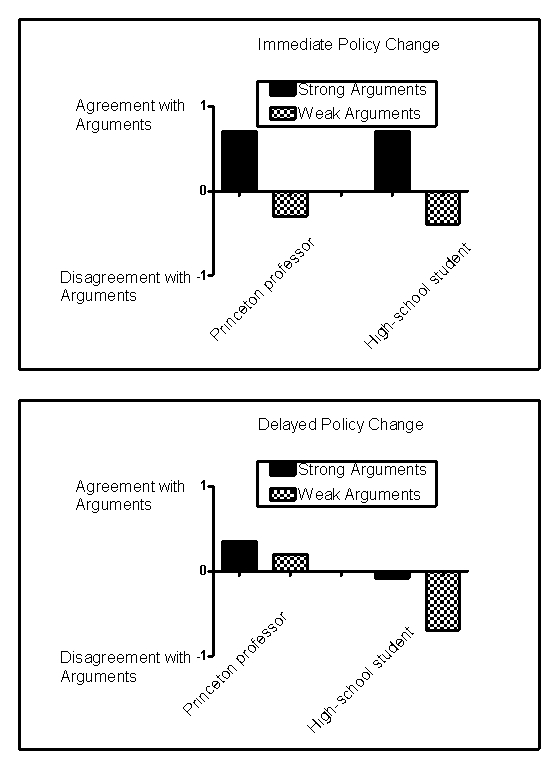Use the following to answer questions :
Scenario II
The scenario contains fabricated results consistent with the following study:
Petty,R.E. ,Cacioppo,J.T. ,& Goldman,R.(1981) .Personal involvement as a determinant of argument-based persuasion.Journal of Personality and Social Psychology,41,847-855.
Every day,consumers are exposed to scientifically based sales,marketing,and public relations strategies designed to influence purchasing decisions,change opinions,or win votes.One common sales strategy is the foot-in-the-door technique,a method that involves first making a smaller request that consumers are likely to grant and then following it with a larger request.Another common strategy is the door-in-the-face technique,which involves making an unreasonably large request that consumers will reject and then following it with a smaller request.When persuasion is necessary,it usually takes one of two forms: heuristic persuasion,which involves an appeal to habits or emotion,and systematic persuasion,which involves an appeal to facts and reason.Often,people will rely more on heuristics-simple shortcuts or "rules of thumb"-to make decisions instead of systematically weighing the evidence.
Petty and colleagues (1981) investigated some of these techniques in university students listening to arguments in favour of their university requiring an institution-level comprehensive final examination for graduation.Some students were led to believe that,if adopted,this policy would take place right away,and some were led to believe that the change would take place in a decade.In addition,some of the students were led to believe that they were listening to an argument from a Princeton professor,and others were led to believe that they were listening to an argument from a high school student.Finally,some students heard strong arguments in favour of the policy,and some heard weak arguments.Thus,the experiment arranged six groups of students.For example,one group of students heard strong arguments from a high school student about a far-removed policy change.Figure 13.1 shows fabricated results illustrating the major findings of this experiment.
Figure 13.1 
-(Scenario II) The results shown in Figure 13.1 suggest that university students were systematically persuaded when the:
Definitions:
Organization's Policies
Official rules and guidelines that govern how an organization operates and makes decisions.
Occupational Safety
The discipline focused on the safety, health, and welfare of people engaged in work or employment, aiming to reduce workplace hazards and prevent accidents and injuries.
Citations Posting
The act of documenting and sharing references or sources, typically used in academic or professional research to acknowledge the original works of others.
Hazard Violation
A breach of workplace safety standards that poses a risk to health and safety.
Q37: At work,Matt's boss yelled at him.After Matt
Q89: Jenna fakes physical or psychological symptoms in
Q117: The frustration-aggression hypothesis states that suppressed aggressive
Q192: A _ is a simple shortcut or
Q210: The _ suggests that people are more
Q228: People with an internal locus of control
Q275: People's tendency to take credit for their
Q303: Early research into the _ approach to
Q315: Presented as a continuum,which Big Five personality
Q354: Samantha is a first-year university student living